WOLF retro DESIGN REVIEW. 3rd Dec 2023
Mercedes 80s Boxiness perfected.
A Retro Review looks at products that are at least over ten years old from a present-day WOLF design and craftmanship perspective. While the technology and fashion of an era influence design, and are taken into consideration, great design ideas will transcend their eras to be timeless.
Interesting and factual information may be provided, but our review aims to deliver insight into the eyes and mind of a WOLF Architect.


Iconic 80s
Introduction
Product description
The W124 Mercedes cars were produced from 1984 to 1997, and was a hugely successful line with numerous body configurations. The A124 convertible variants were produced from 1993 to 1997. The E320 in this review is a 1993 model and bar the AMG variant, was considered top of the range.
Price and Availability.
The E320 is much rarer than the E220 and can easily command 30% more in value for its larger engine. Very few show up for sale in Australia with mint low KM examples fetching well over $50K. Average cars are between $25K to $40K.
Additional information
The A124 convertible was Mercedes first cabriolet model since the W111 cars that were launched 30 years prior in 1963.
Review

First impression/ Delight
We remember this car from the time of launch, and although it was a radical leap forward in evolution from the W123 it was still rather boxy. As we moved into the 90s and 2000’s the W124 continued to look even more dated and stiff. Then around 2019, some 35 years later the W124 cars started to be seen in new light. Their quality build and engineering allowed many to survive and those firm straight lines started to look kind of cool. Straight and boxy was finally classic and retro.
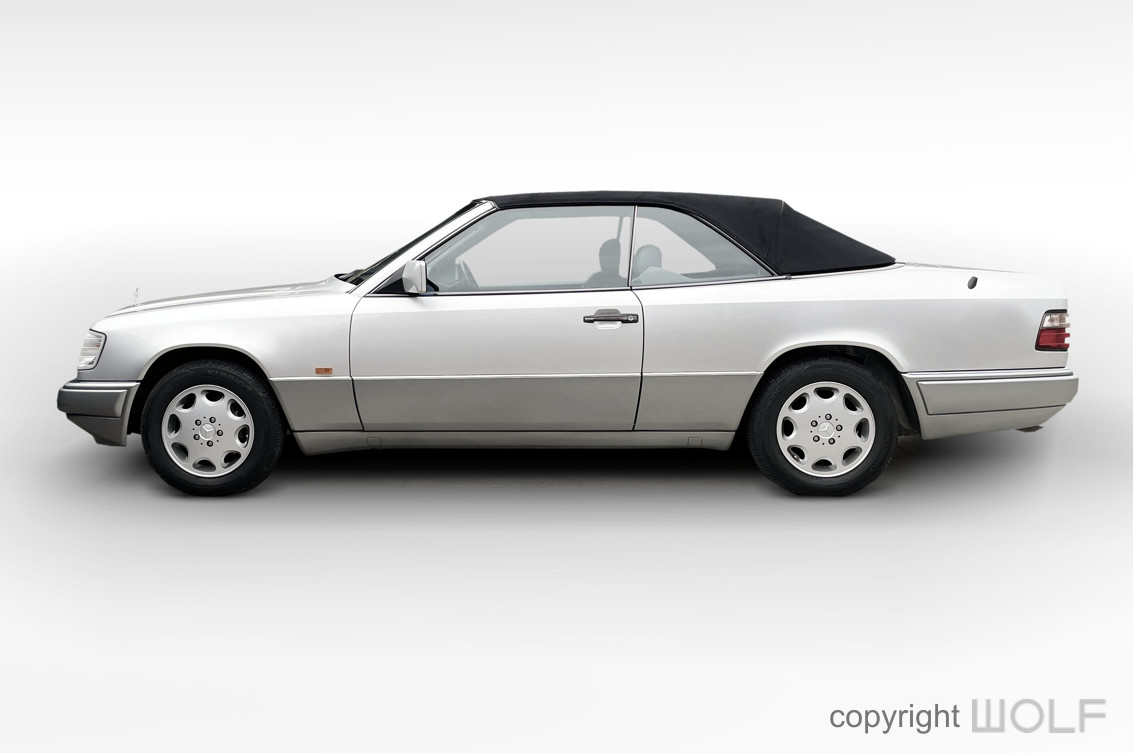
Exterior Design Review
The A124 Cabriolet is uncompromisingly straight and would be the car that cemented a certain sense of stiffness and rigidity to what was considered “German Engineering”. This was a car you could draw with a ruler and just add small curves at the end of each line. The architectural language of this car is very consistent and with each passing year looks more and more iconic. Being a facelifted A124 this E320 has a narrow section of the bonnet extending down either side of the chromed front grill. The bonnet star broke from tradition and sits on the bonnet instead of being on the top of the chromed grill. It is a softer look to previous models and brought it closer in line with its R129 and W140 siblings. The rectangular headlights are bold and with clear indicator lenses look huge compared to modern day headlamps.
The sides are rather flat and take us back to the rather boxy W114 sedans. However, the W124 has a very crisp straight line through the guards and doors which direct the car aggressively forward. The body-coloured bumpers and side boards also look quite smart and we like the discrete thin elegant chrome trimmings.




Between the A-Pillar and the wing mirror is a clever rubber cover that geometrically folds and connects the two.





The standard 8-hole alloy wheels are not the perfect match in our opinion but at least they don’t detract from the car’s sophistication.
Interior Design Review
Internally the W124 is vastly more contemporary than its W123 predecessor. Despites this evolution everything is still very simple and conservative. True to Mercedes interior design philosophy at that time, nothing was more than it needed to be and all is positioned perfectly with function in mind. The wood trim is generous and on most cabriolets was in Walnut or Burl wood.
The grey interior of this car looks smart with leather on both seats and door panels. The straightness of everything is consistent with the exterior and while relatively dated for a 90’s car was intelligent and comfortable.

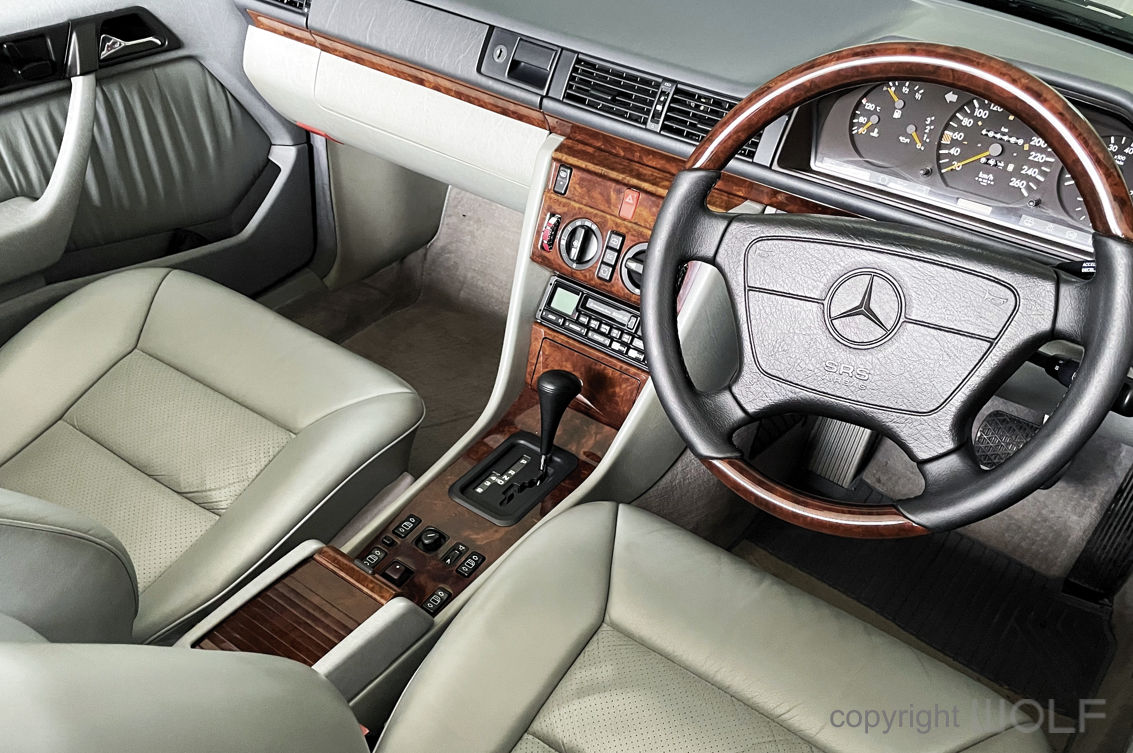


The car in this review is optioned with a walnut wood/leather steering wheel which adds a little more class to the restrained interior.
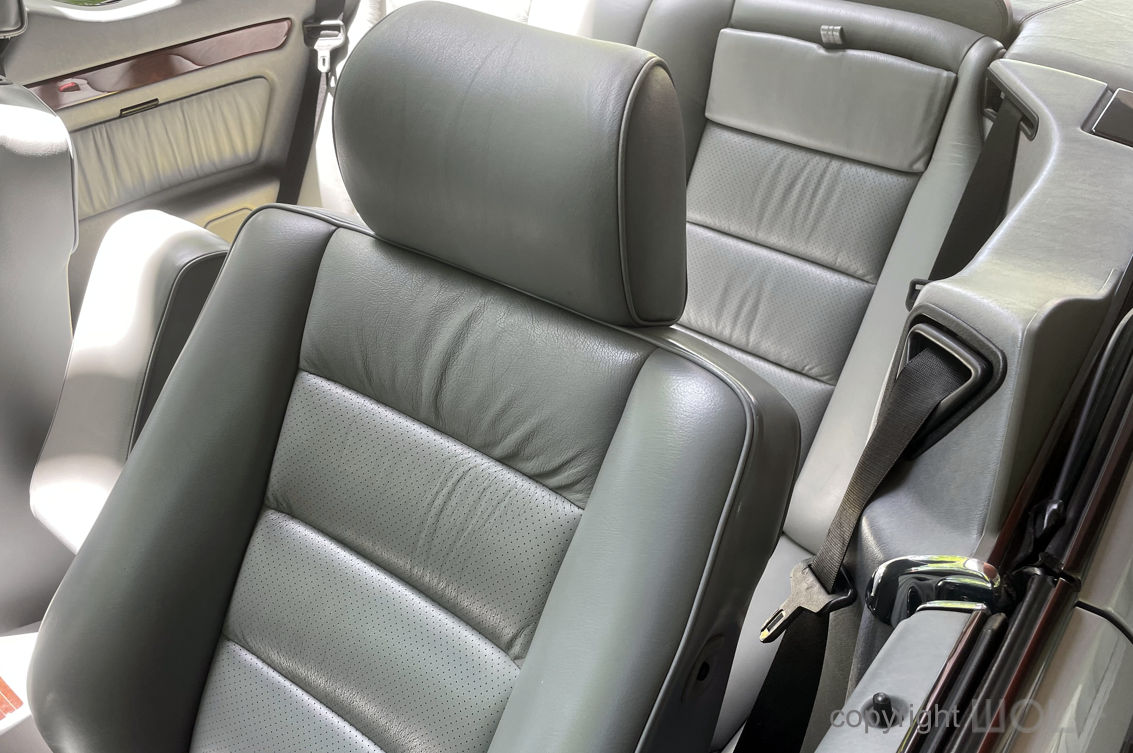



Craftsmanship.
The quality is undeniable and still impresses today. Mercedes understood how to build the World’s best cars and proved it repeatedly with sedan cars such as the W123, W116 and W126 which preceded the W124.
Externally the body is rigid and feels as if hewn from a single block. The Bumpers are of a quality plastic and well assembled but being finished in body paint are vulnerable to scuffs. In this car there are black aluminium trimmings on the window sills, A-pillars, and soft-top compartment lid.
Internally all panels fit snug and tight so that nothing ever rattles or vibrates. All controllers, switches and dials have that firm feeling of something solid and made to last. The leather on seats and doors seem thicker than average and most cabriolets still have nice factory leather. We like the no fuss instrument cluster design that is all about clarity. The needles on these often fade to yellow, but the ones in this car are still bright and orange.
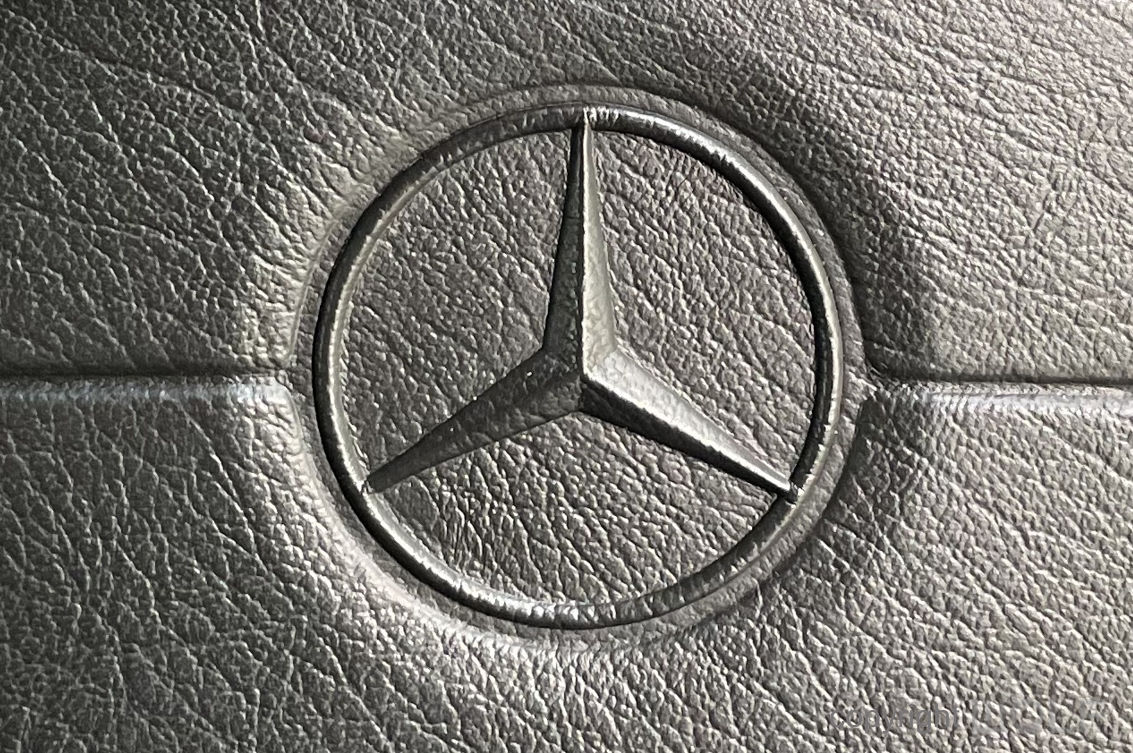


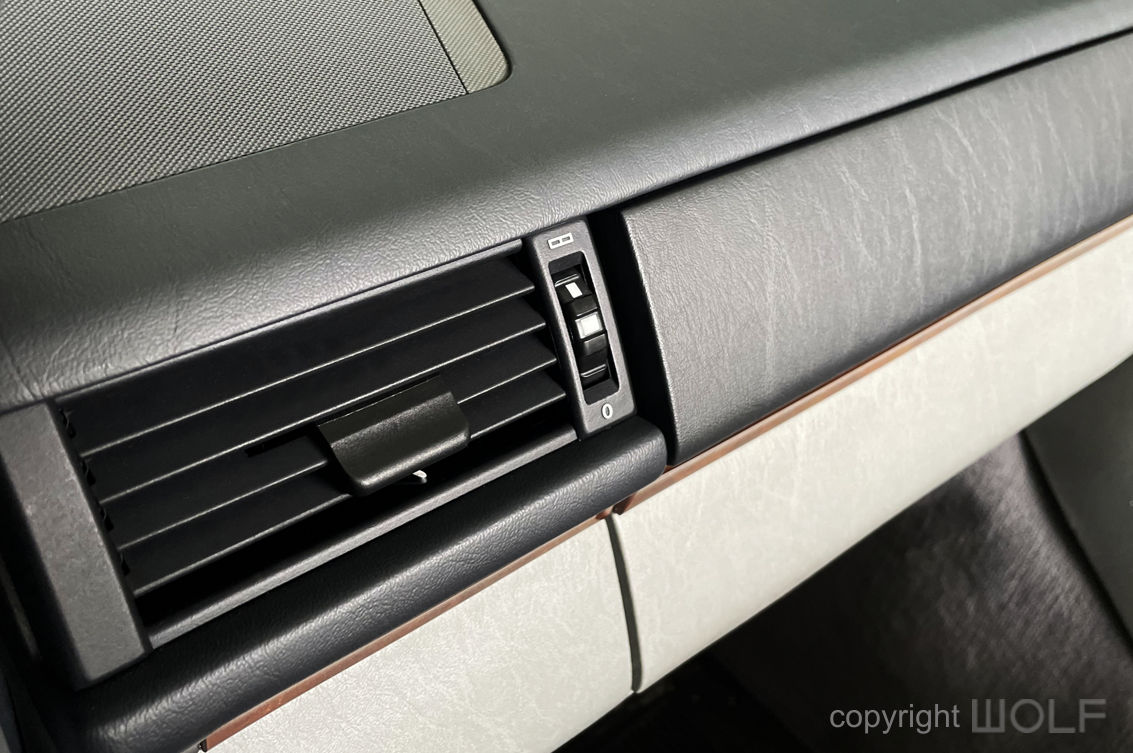

The dash speakers are masterfully contoured to the shape of the dash and sit flush.
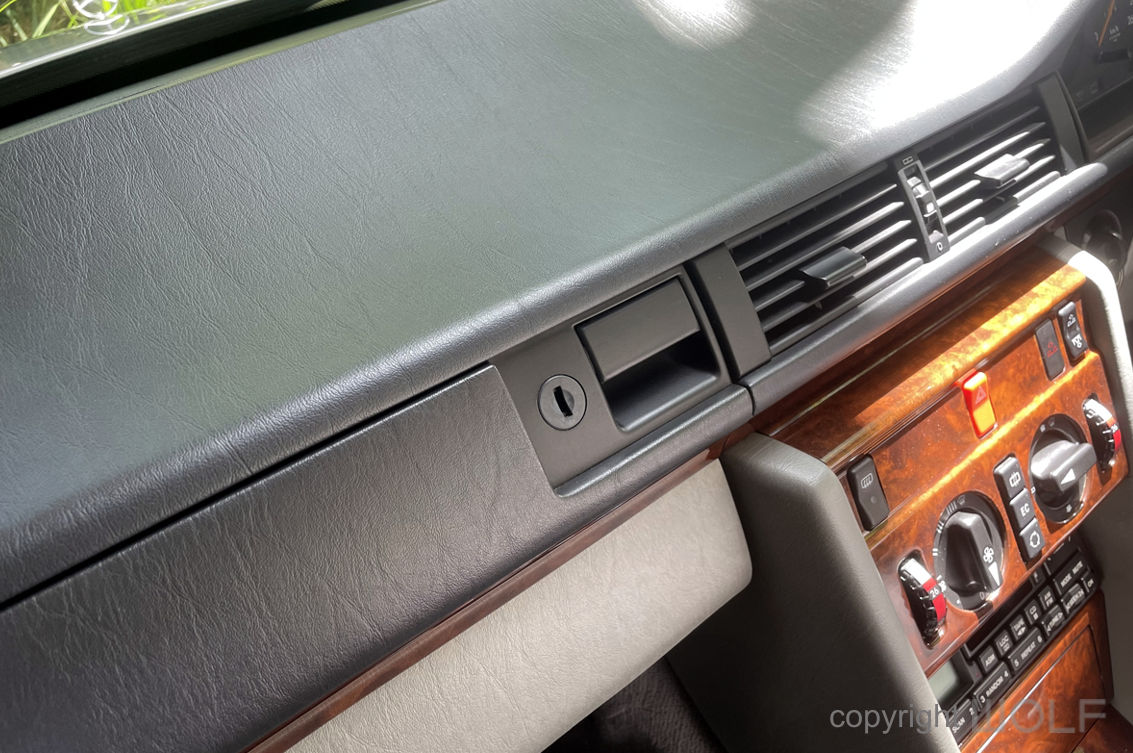

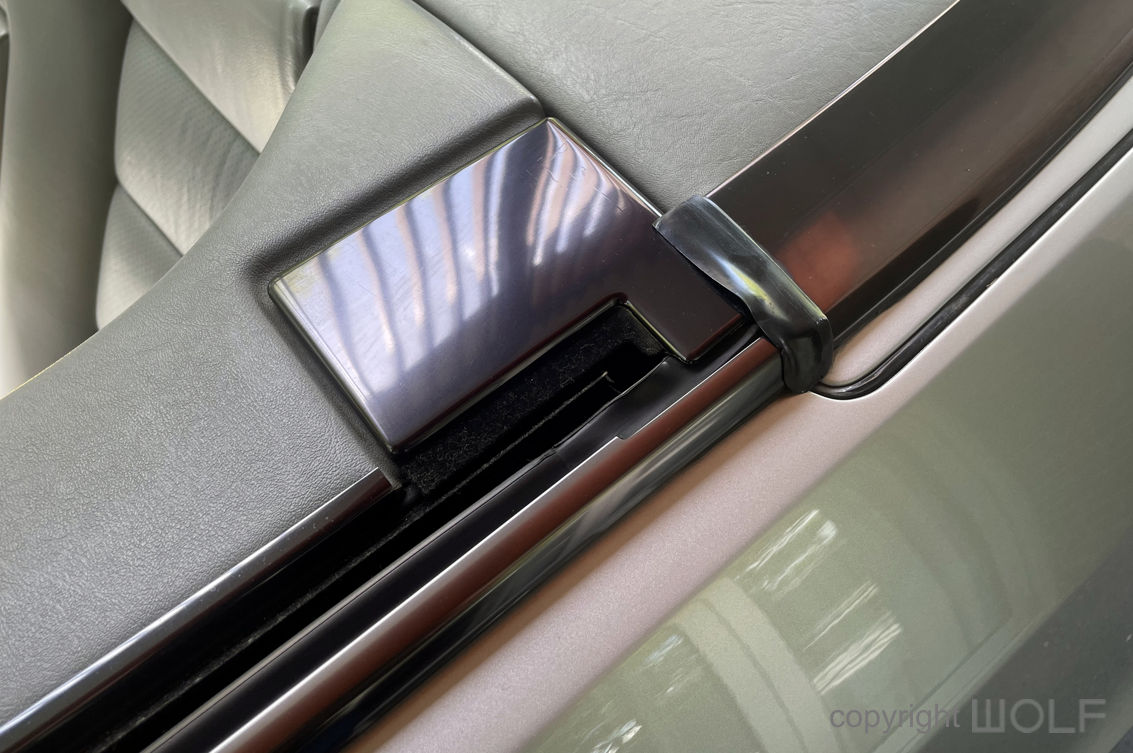


Function – Experience.
Everything on this car is firmly in place to feel balanced and at ease. The doors close with that renown Mercedes “Thunk” and there is even a certain smell that says “made in Germany”. There is calmness in the cabin with all things easy to read and reach. Nothing is overstated so you never feel rushed, even though the seat belts are handed to you with extended arms (how polite).
Externally the lines feel intentional and although the car appears relatively boxy it is aerodynamic and this is evidenced in gentle wedge shapes and angles together with a flushness in all things. The single wiper for example, which is an engineering masterpiece, is half tucked under the rear edge of the bonnet. The rear of the car also tapers slightly inwards.
We like the corrugated tail lights that were first seen in the W114 E class from the early 70s. Mercedes were well renown for this grooved design style which allowed air to channel through. They claimed them to stay cleaner and be more visible with snow. The same principle holds true with the front turn indicator lenses.
The automatic folding roof is marvelous and even after three decades will perform as it did on day one. The A124 was the first Mercedes to have a solid rear glass screen in the soft top as opposed to a soft plastic one. The soft-top roof is insulated and very well made, though most will have had the outer canvas material replaced at least once.


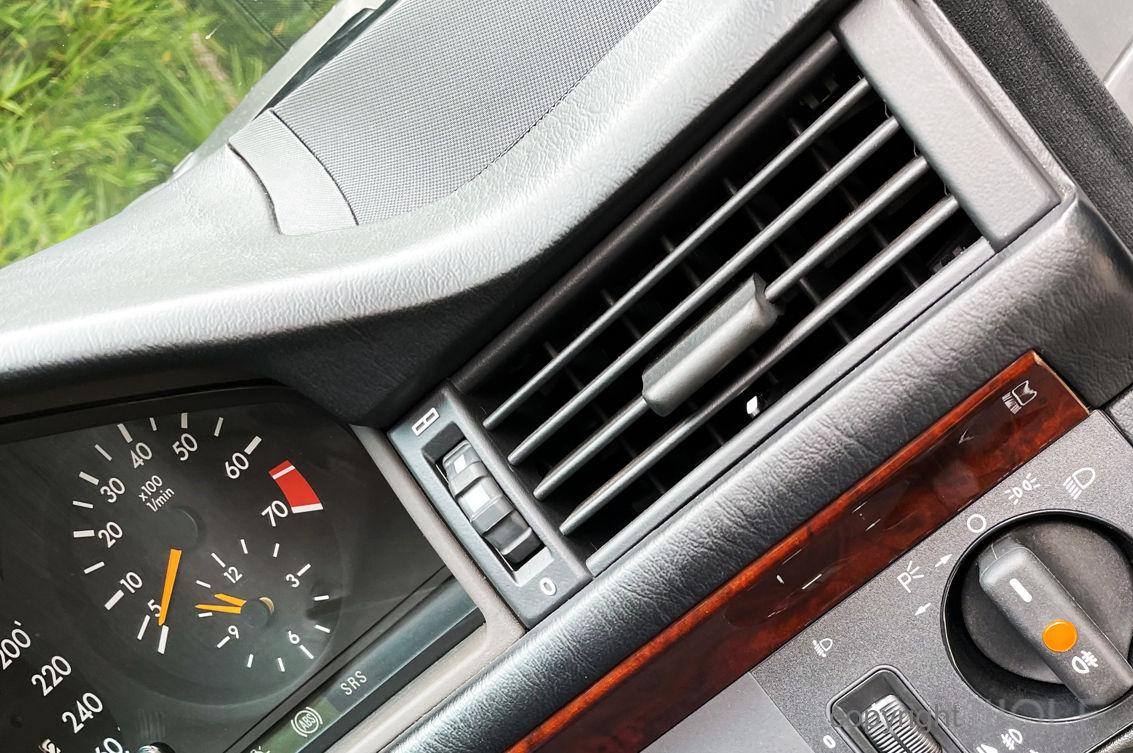
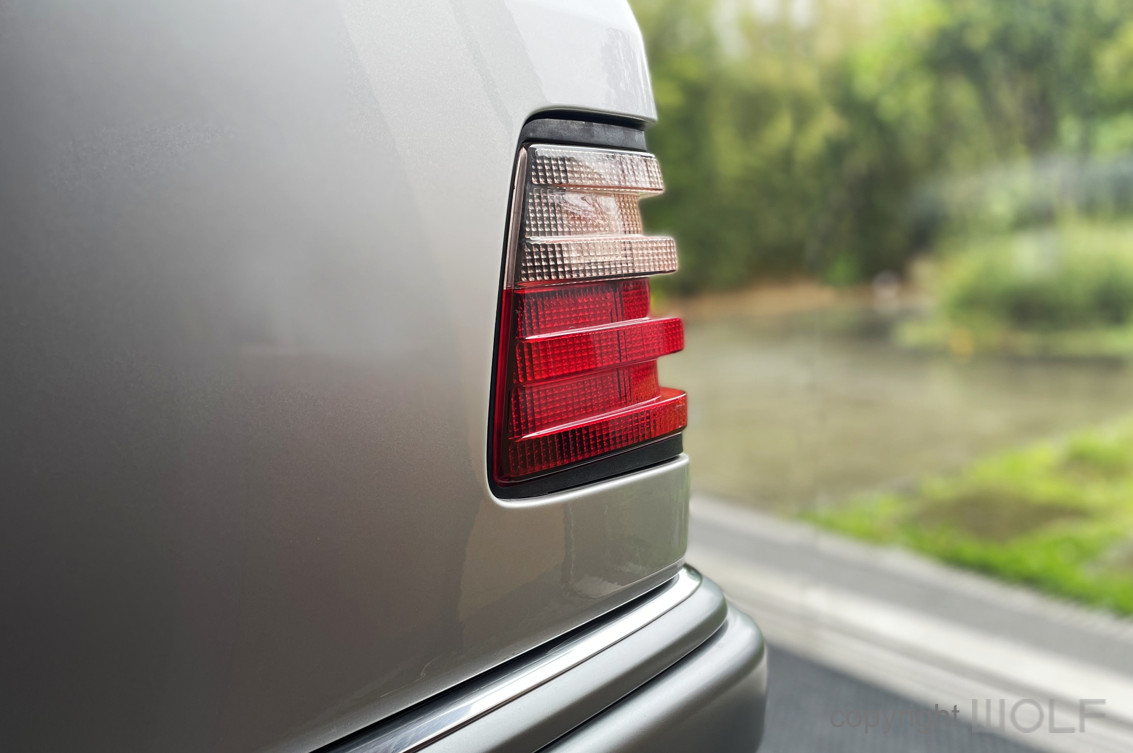





Desirability – Collectability or Value for money
Mercedes cemented their reputation for quality with the W124, and this is evidenced today by the number of surviving good examples with many in exceptionally original condition. The A124 convertible is a beautifully designed car and certainly the one to go for. As an an iconic classic collectible they are not expensive. You will need to be patient as owners don’t like parting with them, particularly if you are after the more rare E320 models. Most are well cared for, and even high mileage ones can look good due to their superior build quality. We like the silver body with grey interior combination however that is quiet rare in Australia. Black metallic seems to be more common.


WORD OF THE WOLF
The W124 took quality and engineering to a new level for what was considered a middle range sedan. Even today this is possibly Mercedes most iconic “E” class. No other E class since has been produced with four body types. They have become a true classic with an elegant understated vibe. It is not the kind of car that screams at you to notice how good it is. In fact you almost feel invisible in them, even with the roof down. If you’re looking for an inexpensive classic that is destined to appreciate these E320 cabriolets are certainly worth considering. In our opinion the W124 is one of the few cars of its age group that is still quite safe, practical and modern compared with new cars today. Mechanically they are possibly even more reliable and dependable.



The A207 E Cabriolet (left) is a direct descendant of the A124. You could call it a great grandchild with a design that is significantly evolved.

The genuine factory car cover is a rare accessory and worthwhile as it comes tailored with special pockets for the bonnet star and wing mirrors.
WOLF DESIGN EXCELLENCE SCORE = 8.0
Disclaimer
The information in this review is intended for informational or educational purposes to provide readers an understanding of how something may be seen from a certain design perspective. In this case it is from the view point of WOLF DESIGNS. As design is subjective this review should only be considered as an independent opinion. Information further to being of an opinion is provided to the best of our knowledge based on our own research at the time of doing the review. We cannot be held responsible for any inaccuracies or inconsistencies and reserve the right to change or update any content as appropriate.
The final responsibility of the design resides with the original manufacturer.

